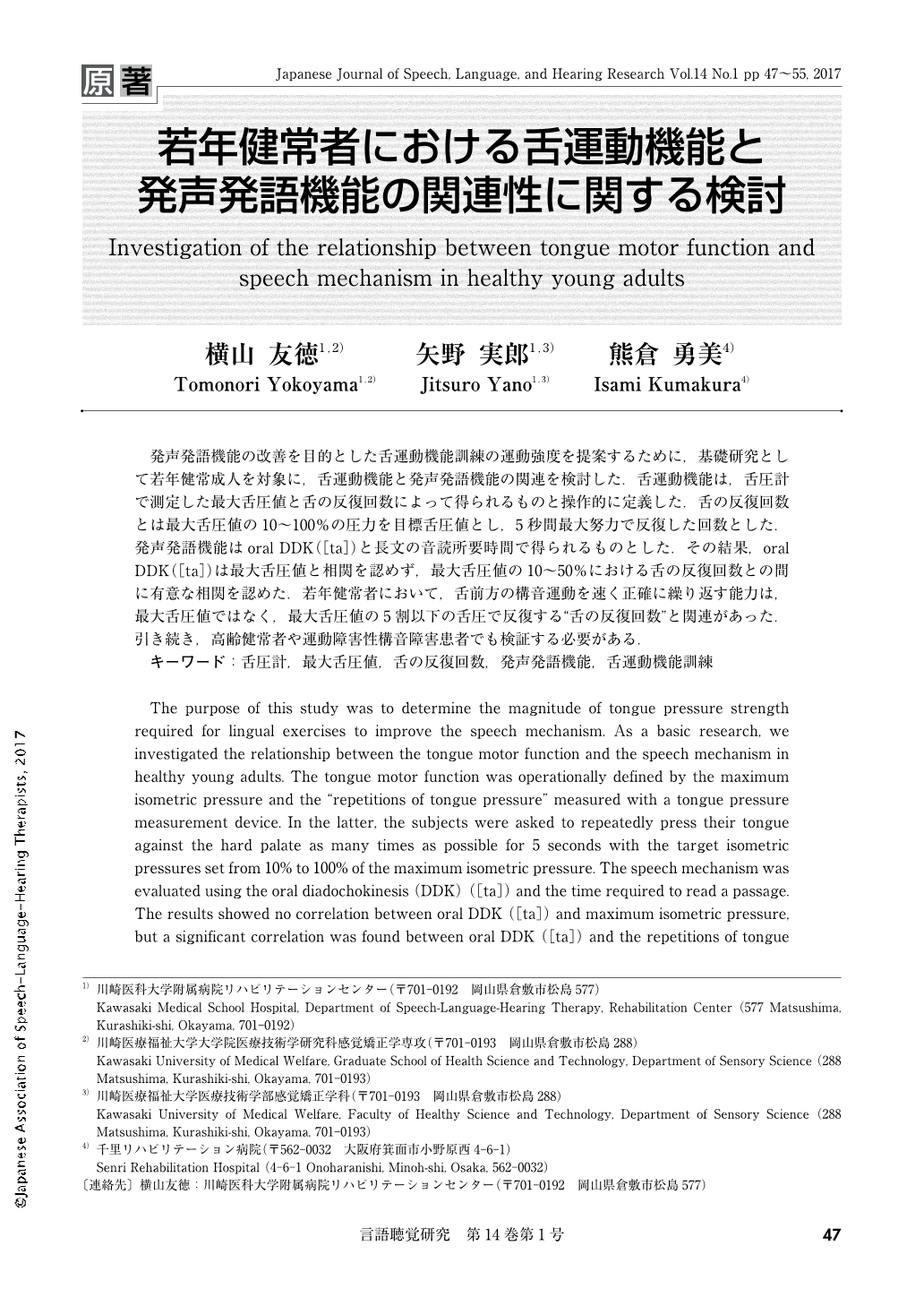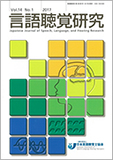Japanese
English
- 有料閲覧
- Abstract 文献概要
- 1ページ目 Look Inside
- 参考文献 Reference
- サイト内被引用 Cited by
発声発語機能の改善を目的とした舌運動機能訓練の運動強度を提案するために,基礎研究として若年健常成人を対象に,舌運動機能と発声発語機能の関連を検討した.舌運動機能は,舌圧計で測定した最大舌圧値と舌の反復回数によって得られるものと操作的に定義した.舌の反復回数とは最大舌圧値の10〜100%の圧力を目標舌圧値とし,5秒間最大努力で反復した回数とした.発声発語機能はoral DDK([ta])と長文の音読所要時間で得られるものとした.その結果,oral DDK([ta])は最大舌圧値と相関を認めず,最大舌圧値の10〜50%における舌の反復回数との間に有意な相関を認めた.若年健常者において,舌前方の構音運動を速く正確に繰り返す能力は,最大舌圧値ではなく,最大舌圧値の5割以下の舌圧で反復する“舌の反復回数”と関連があった.引き続き,高齢健常者や運動障害性構音障害患者でも検証する必要がある.
The purpose of this study was to determine the magnitude of tongue pressure strength required for lingual exercises to improve the speech mechanism. As a basic research, we investigated the relationship between the tongue motor function and the speech mechanism in healthy young adults. The tongue motor function was operationally defined by the maximum isometric pressure and the "repetitions of tongue pressure" measured with a tongue pressure measurement device. In the latter, the subjects were asked to repeatedly press their tongue against the hard palate as many times as possible for 5 seconds with the target isometric pressures set from 10% to 100% of the maximum isometric pressure. The speech mechanism was evaluated using the oral diadochokinesis (DDK) ([ta]) and the time required to read a passage. The results showed no correlation between oral DDK ([ta]) and maximum isometric pressure, but a significant correlation was found between oral DDK ([ta]) and the repetitions of tongue pressure aimed at 10-50% of maximum isometric pressure. In healthy young adults, the ability to quickly and accurately repeat articulatory movements of the anterior tongue was related to the ability to the repetitions of tongue pressure at ≤50% of the maximum isometric pressure. Examination of this issue in healthy elderly adults and paralytic dysarthria patients is warranted as further research.

Copyright © 2017, Japanese Association of Speech-Language-Hearing Therapists. All rights reserved.


